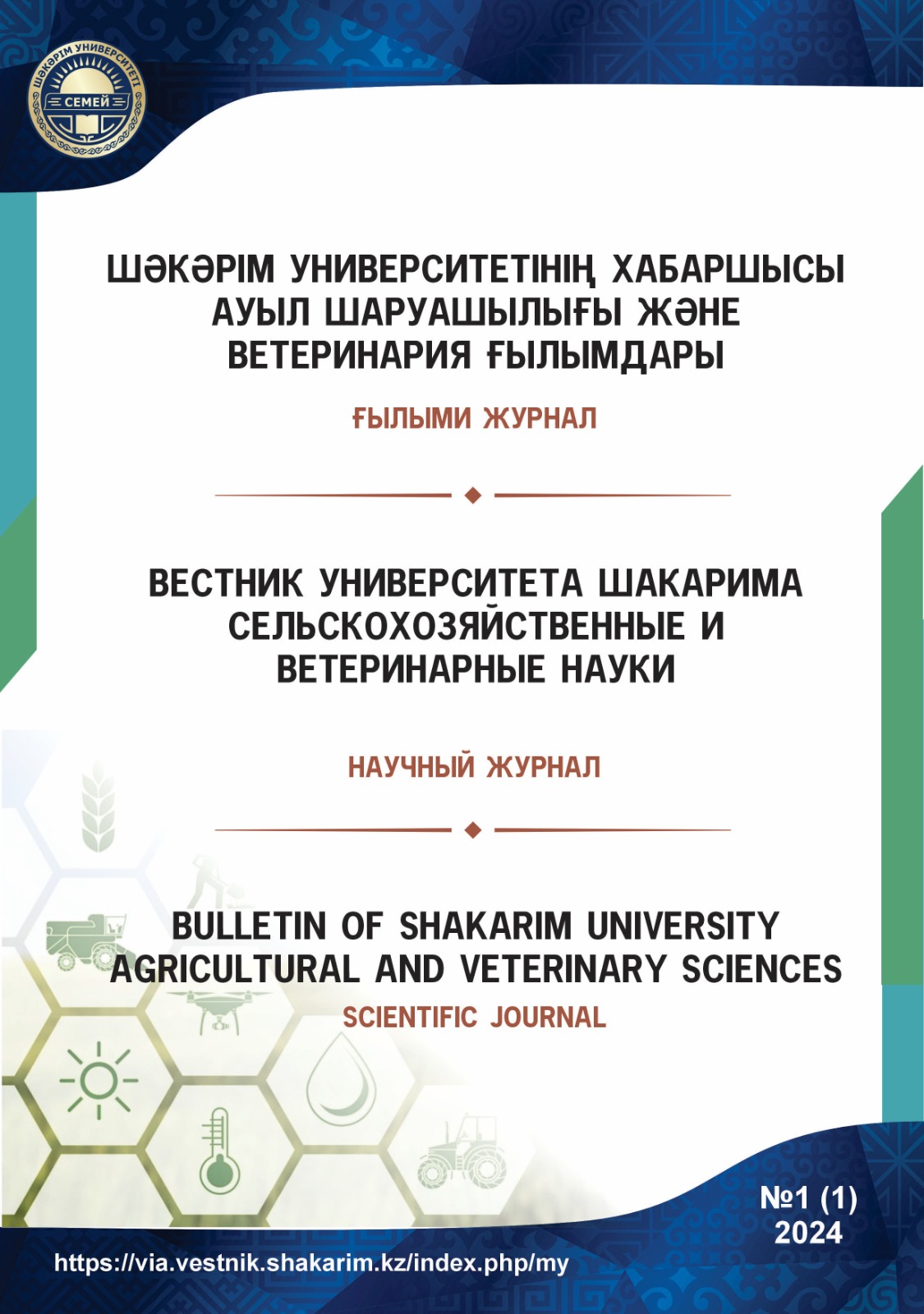THE IMPACT OF LAMBS BREEDING BY DIFFERENT TECHNOLOGIES ON GROWTH AND DEVELOPMENT
Abstract
The article presents the results of research on the technology of rearing young animals of local fat-tailed coarse-wooled sheep raised in the peasant farm "Sagidolla" of the Tarbagatai district of East Kazakhstan region.
The main goal in this field of animal husbandry is to increase the number of animals capable of consistently transferring high-quality, productive qualities from generation to generation, obtaining high-quality young animals and creating favorable conditions for their reproduction. The main way to ensure the production of livestock products in the required quantity is to thoroughly understand the patterns, the content of animal development and master them. This is due to the fact that the species, breed characteristics, and all productive qualities of any animal are formed on the basis of its genotype and the interaction of the external environment on the path of its growth and development.
The constitution of the Kazakh fat-tailed coarse-wooled sheep breed is strong, adapted to local conditions, resistant to harsh natural conditions. Therefore, it is of great importance to study the local Kazakh fat-tailed coarse-wooled sheep breeds, which are the basis of research work, and the features between the intensity of growth and the productivity of the offspring obtained from them.
Animal breeding methods are understood as a system of matching pairs, carried out taking into account the breed and species origin of the reflected livestock. During the breeding of young Kazakh fat-tailed coarse-wooled sheep, Sakman and kachar-basic breeding methods were used in these studies.
Downloads
Downloads
Published
Issue
Section
License
Copyright (c) 2024 The editorial staff of the journal follows the copyright law of the Republic of Kazakhstan and relevant international agreements. The authors retain their copyright and provide the journal «Bulletin of Shakarim University. Series of Historical Sciences» right of first publication of the manuscript. The author has the right to copy and distribute the material in any medium and in any format, subject to appropriate reference to the journal. Readers and users can freely copy, distribute and adapt the material, provided that the author of the work is indicated and a link to this journal is provided. Copyright presupposes the integrity and responsibility of each co-author who made a significant contribution to the writing of the article. The author has the right to store his publications in an institutional or other repository of his choice, provided he provides the appropriate link to the journal’s website.

This work is licensed under a Creative Commons Attribution-NonCommercial 4.0 International License.
Copyright presupposes the integrity and responsibility of each co-author who made a significant contribution to the writing of the article.
The author has the right to store his publications in an institutional or other repository of his choice, provided he provides the appropriate link to the journal’s website.




